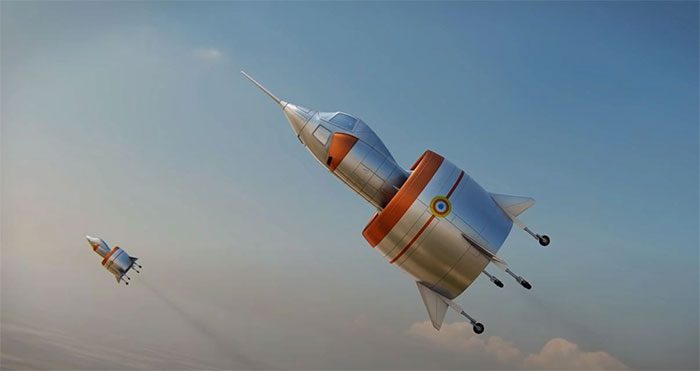Since the dawn of humanity, we have looked up at the sky and yearned to soar like birds. Yet, even those with little sensitivity or understanding of aviation know that to fly, you need wings to generate lift, allowing an aircraft or anything similar to take off.
But what else does an aircraft need to be able to ascend? Long runways. Runways, in essence, are a conundrum. They occupy vast areas of land and are costly to build and maintain. Particularly, military runways are the first targets in a conflict, as destroying an enemy’s runway effectively neutralizes their air force.
In the 1950s, aircraft engineers began to think outside the box. If planes had more power and features, they might not need runways at all. Thus, a wave of experimentation with vertical takeoff and landing (VTOL) aircraft began. If proven successful, these new designs would eliminate the need for runways entirely, as they could take off from virtually anywhere.

Wingless aircraft will take off and land vertically, without the need for runways.
The famous French aircraft engine manufacturer SNECMA (Société Nationale d’Études et Construction de Moteurs d’Aviation, now Safran Aircraft Engines) utilized the design of Austrian engineer Helmut von Zborowski to start developing a model of an aircraft that did not use conventional triangular wings. In fact, the C.450 Coléoptère (which means “beetle” in French) had no wings at all.
Equipped with a jet engine featuring an axial flow pump design, the Coléoptère had a “wing” in the form of a circular structure with a diameter of 3.2 meters surrounding the lower half of the aircraft. SNECMA hoped this design would transform it into a jet by compressing incoming air, mixing it with fuel, and igniting it to propel it beyond the speed of sound.
During takeoff and landing, thrust would be redirected using propellers located in the engine’s exhaust. Four small fins strategically placed around the “wing” would function as rudders to provide directional control while flying. These fins could retract, hiding within the nose and deploying when needed to help tilt the aircraft from vertical to “landing” mode.
The innovative rotating cockpit seat was designed to allow the pilot to maintain a locked and upright position based on the aircraft’s axis.

Coléoptère was put into actual flight testing.
Since this was a time before simulations could be tested on computers, pilots had to directly participate in testing the prototype. The first real-world tests began in April 1959.
Serious issues arose almost immediately. Without stabilizing wings, the aircraft spun uncontrollably when hovering during vertical takeoff. Sitting like astronauts atop a rocket, the pilots struggled to see the ground. Ultimately, due to the absence of wings, theoretically, this vehicle would not be able to glide to safety in the event of an engine failure. The Coléoptère project faced the risk of failure.
On July 25, 1959, SNECMA continued to “hammer out” the transition capability from vertical takeoff mode to horizontal flight mode. However, it tilted too much, and the pilot could not regain control. He was forced to eject to save his life, and the Coléoptère was destroyed upon crashing. The request for funding for a second prototype did not materialize, leading to the project’s eventual cancellation.


















































